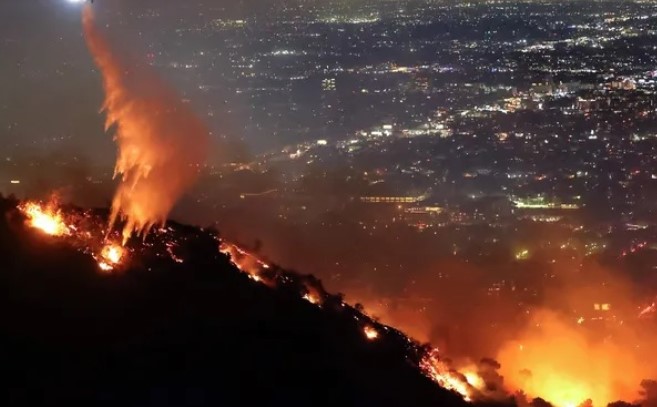
STRATEGIC ASSESSMENT. The United States has reached a hateful juncture. Politics are hyper-partisan and adversarial. Public health infrastructure is buckling under the weight of a pandemic mishandled from the start. Socio-economic inequality is rising, while the notion of a social contract seems to be fading. Tribalism reigns supreme. It is going to take persistent leadership at every level to reverse the current dystopia, something few people expect until a change in administrations. Within this toxic environment, hate crimes have spiked. Such crimes have always been an ugly part of American society, but now there is a public embrace of incitement and demonization, beginning with the current political leadership and seeping down into local communities. With a pandemic raging to its highest weekly case rate thus far, extreme political polarization, glaring racial tensions, and economic anxiety have made the United States into a tinderbox.
The Federal Bureau of Investigations (FBI) recently released the numbers of hate crimes in 2019. Since 1990, the Department of Justice has been required to collect data ‘about crimes that manifest evidence of prejudice based on race, religion, sexual orientation, or ethnicity.’ The FBI collects data that is voluntarily submitted by thousands of local and state law enforcement agencies under the Uniform Crime Reporting (UCR) Program. In 2019, 15,588 law enforcement agencies reported statistics, a decrease from 16,039 agencies in 2018. There are more than 17,000 state and local law enforcement agencies in the United States, and the lack of mandated crime reporting has plagued the development and analysis of an accurate picture of criminal acts and hate crimes in this country.
In 2019, there were at least 51 hate crime killings, the most since the FBI began to collect statistics in 1990. One single event accounted for 23 deaths – the August 3, 2019 mass murder in El Paso, TX in which the shooter stated he was deliberately targeting ‘Mexicans.’ Even without that attack, there was still an increase from 24 to 28 in hate crimes that ended in murder. The racist and ugly rhetoric espoused by President Trump and reinforced and often championed by some of his supporters, in which immigrants were compared to invaders, criminals, and parasites, has created an environment of intimidation and fear. The argument that this agenda is merely about decreasing illegal immigration is undercut by the Trump administration’s rhetoric and policies, such as decreasing refugee admission numbers to historic lows and denying legal asylum claims as a matter of practice. In 2019, anti-Semitic attacks increased 14% in the United States, while these attacks have simultaneously been on the rise in Europe. In 2018, a gunman deliberately targeted the Tree of Life Synagogue in Pittsburgh, PA, murdering 11 people. In 2019, there was no similar mass-casualty attack targeting Jewish communities, but the 14% increase in anti-Semitic hate crimes was in itself enough to increase the number of religious hate crimes perpetrated that year.

Anti semitism has been an enduring American scourge, and it once again forms the foundation of conspiracies imbued with prejudice and bigotry. QAnon conspiracies of a shadowy ‘globalist elite’ obsess with George Soros. Anti-Semitic imagery has proliferated online and is posted on social media in the form of memes, intended to distort the severity of events like the Holocaust. Lost among statistics is the devastating impact of hate crimes on individual victims and their communities. Hate crimes strike at the heart of society and should be denounced by all. Instead, hate crimes have been minimized, ‘both-sided,’ or winked at by government officials and public figures, at the very least showing complicity by not addressing the issue and at the worst demonstrating incitement. The threat of hate crimes is rising, along with the social and political tensions that are being deliberately fueled in the open. Countering this threat will be a continuous struggle for every neighborhood, city, state, and federal entity, and a challenge that desperately requires ethical, competent, and empathetic leadership (TSC).





